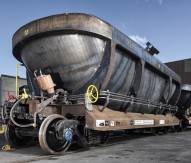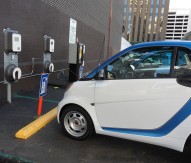
EU funds vibration-tracking project to improve safety
The EU has invested €2.85m in the WiBRATE project, which has analysed vibrations and developed a self-powered wireless sensor system that collects vibration information and prevents failures of machinery.
The system consists of a self-powered wireless vibration control and monitoring platform that can be fitted to trains, civil engineering structures, energy installations (such as petrochemical plants), and factory floor machinery. The sensor system converts the vibration into power and all data is transmitted wirelessly. The system is the brainchild of a consortium of research centres and companies, led by the University of Twente in the Netherlands.
Neelie Kroes, Vice-President of the European Commission with responsibility for the Digital Agenda, said: “This project can help make a difference – it is another example of how new technologies can improve our daily lives. With a boost from the EU, research teams are able to develop their best ideas. Then they can bring their findings to the market, for the benefits of citizens and businesses.”
“Imagine a factory where machines are equipped with intelligent sensors that detect impending failures by monitoring vibrations,” said Professor Paul Havinga of the University of Twente. “The sensors can be installed with minimum effort and cost. They create an ad hoc intelligent network that can supervise the machinery on a continuous basis and eliminate the labour-intensive process of periodic monitoring.”
UK train operating company Southeastern has installed the new sensor system on a number of its trains and found it delivered savings of €12,000 per train annually, as well as helped to identify premature failures. Train operators get real-time information on the health status of the trains, allowing constant monitoring and prevention. This, Southeastern says, reduces service disruptions for passengers and optimises the use of its assets.






